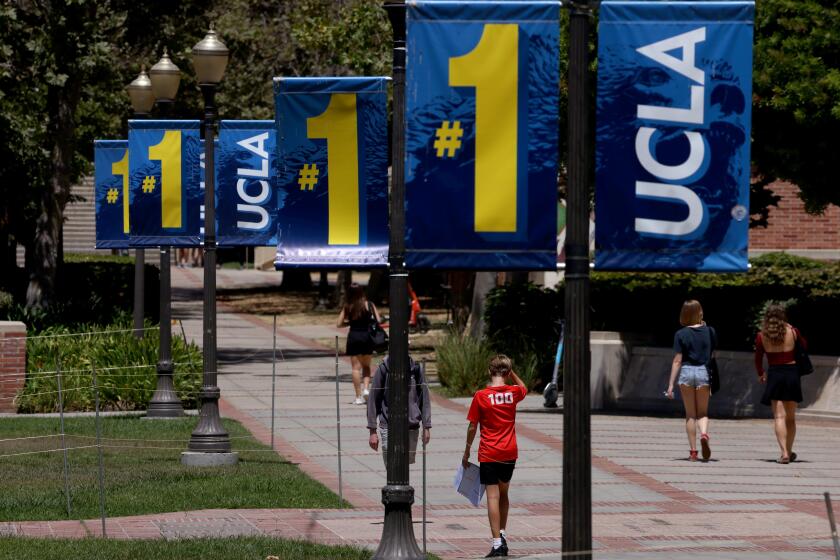Gene Injection Tested to Step Up Healing
- Share via
WASHINGTON — An injection of a therapeutic gene may someday help to heal an athlete’s badly damaged muscle, fractured leg or blown-out knee, researchers say.
In lab animals, gene therapy has knit together broken bones and made injured muscles grow stronger. Preliminary human trials already have begun, and experts believe these experimental findings will develop into treatments.
“I think the chances are extraordinarily high,” said Dr. R. Rodney Howell, a University of Miami School of Medicine professor who is president of the American College of Medical Genetics, a professional group. “It’s going to take a while, but I think the chances are overwhelming it will work.”
Therapies may start to show potential for sports injuries in two to five years, researchers say. “These are very complicated studies,” Howell said. “The time frame will be substantial. It’s not going to be next week or next year.”
Much of the work centers on growth factors, proteins that the body produces to help various tissues grow. Because genes direct the production of growth factors, researchers are working on ways in which to add copies of these genes.
One method is to genetically engineer a virus, such as one that causes the common cold, by removing the illness-causing material and replacing it with a growth factor-triggering gene. The virus is then inserted into a test animal, where the new gene implants the growth factor gene in the cells.
Another method is to remove cells from the test subject, add the growth factor-triggering gene to those cells and inject them back into the subject. At this point the virus method is more efficient, said an article in The Physician and Sportsmedicine, a medical journal. But the engineering of a patient’s own cells could have greater potential, said researcher Johnny Huard of the University of Pittsburgh, one of the paper’s authors.
Certain cells, known as muscle-derived stem cells, seem to be progenitors of bone, tendon, ligament or muscle and can be directed to grow into one or the other, Huard said. Substances called bone-muscle genetic protein seem to act as the switch, but it’s not yet known how the body decides which way to make the cells develop, he said.
However, in lab experiments, Huard and other researchers have been able to heal tissue.
Using muscle-derived stem cells, Huard’s lab was able to almost completely heal broken skulls in mice. Researchers at the UCLA School of Medicine healed broken mouse leg bones with stem cells derived from marrow. And at Harvard University, using growth factor carried on a virus, researchers were able to make mice show progressive increases in muscle mass.
The potential benefit for athletes could be healing of joints and bones that are too badly damaged to heal well under current therapies, researchers said. Ligaments and tendons tend to grow back slowly, so a boost from gene therapy could speed the process.
Muscle heals anyway, so gene therapy might only be needed for very bad injuries, said Dr. Jay R. Lieberman of UCLA. But muscle-restoring techniques could benefit people with muscle-wasting diseases such as muscular dystrophy.
Injecting genes for anti-inflammatory proteins could treat joint diseases such as arthritis.
Scientists such as Howell think that findings from disease-focused studies could carry over to benefit athletes. “The basic mechanisms by which they work [are] very similar,” he said.
Human trials into possible benefits for athletes are in the early stages and are aimed at establishing that the therapies are safe.
One risk is that genetically engineered cells could grow out of control, leading to cancer.
Another possibility is that viral cells used to carry the gene may infect the recipient with viral disease.
And for athletes, there is the additional issue of doping. Genes that normally occur in the body might not be found in tests by athletic organizations, leading to the possibility that the winning athlete might be simply the best engineered.






